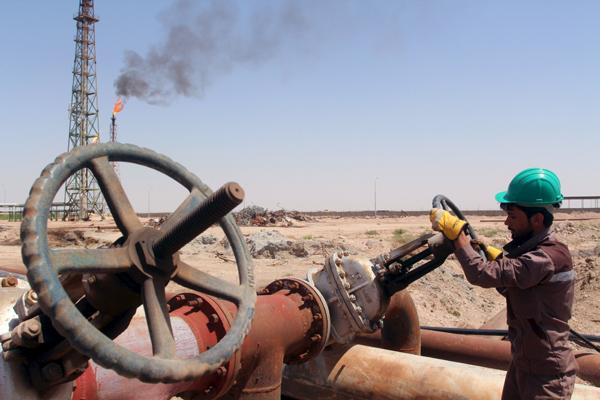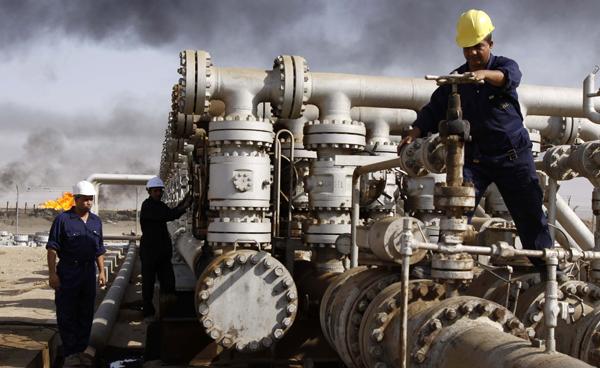You are here
OPEC sees lower 2016 demand for its oil
By Agencies - Mar 14,2016 - Last updated at Mar 14,2016
LONDON — The Organisation of the Petroleum Exporting Countries (OPEC) on Monday predicted global demand for its crude oil will be less than previously thought in 2016 as supply from rivals proves more resilient to low prices, increasing the excess supply on the market this year.
OPEC's monthly report contrasts with that of the International Energy Agency (IEA), which on Friday said producers outside OPEC were cutting production by more than it had expected.
Saudi Arabia in 2014 led a change in OPEC strategy to defend market share instead of cutting output to support prices, hoping to slow growth in rival supplies such as US shale oil. The move accelerated a collapse in prices, which hit a 12-year low of $27.10 in January.
The price drop has started to slow the development of relatively expensive supply sources such as shale and forced companies to delay or cancel billions of dollars worth of projects, putting some future supplies at risk.
In the report, OPEC said it still expected supply from outside the group to fall by 700,000 barrels per day (bpd) this year. But it revised up the absolute level of non-OPEC supply in 2015 and 2016, and said producer efforts to maintain output made its 2016 forecast more uncertain.
"There has been a reduction in production costs, mainly in the US, as well as increased hedging, with producers choosing to produce with losses rather than stopping production," OPEC indicated. "This has caused the non-OPEC supply forecast in 2016 to become more uncertain."
As a result, OPEC now expects the global demand for its crude to average 31.52 million bpd in 2016, down 90,000bpd from last month's forecast.
The group pumped 32.28 million bpd in February, the report said citing secondary sources, down about 175,000bpd from January, mainly due to outages in Iraq and Nigeria.
Saudi Arabia told OPEC it kept output in February steady at 10.22 million bpd, after the top oil exporter struck a preliminary deal with fellow OPEC members Venezuela and Qatar, plus non-OPEC Russia, to freeze output.
Iran, which wants to regain market share after the lifting of Western sanctions on Tehran rather than freeze output, told OPEC it raised supply to 3.39 million bpd, about 250,000bpd more than the secondary sources' estimate.
The report indicates supply will exceed demand by about 760,000bpd in 2016 if OPEC keeps pumping at February's rate, up from 720,000bpd implied in the previous report.
The IEA said the oil price may have finally bottomed out after an unprecedented drop over the past 18 months, noting oil's "remarkable recovery" over recent weeks.
Recent sharp gains in the oil price, taking it to around $40 per barrel now from $28.50 in mid-January, do not necessarily mean that the worst is over, the IEA added in its monthly oil market report.
"Even so, there are signs that prices might have bottomed out," it continued.
Oil had seen a dramatic fall since trading above $110 in mid-2014 to lows seen in January of this year, before staging a modest recovery to current levels.
CMC Markets analyst Jasper Lawler credited the IEA's outlook with sparking the oil price rise by calling for "a possible bottom".
The report was "bullish", added DNB Bank.
"Undoubtedly, one of the reasons for the price strength is the monthly report on global supply/demand published by the IEA this morning," commented oil brokers PVM.
But there is a long way to go before supply and demand find a real balance, probably in 2017, the IEA said in its report.
"For prices there may be light at the end of what has been a long, dark tunnel, but we cannot be precisely sure when in 2017 the oil market will achieve the much-desired balance," it added.
Among factors supporting higher prices are talks among producers launched by Saudi Arabia, Venezuela, Qatar and Russia to freeze production which the IEA said amount to "a first stab at coordinated action that is intended to stabilise prices" with the presumed aim of pushing oil up to $50 a barrel.
The outcome of negotiations is, however, uncertain and a big supply overhang in the oil market means it would have little impact in the months ahead.
"Later this month some oil producers are expected to meet to discuss a possible output freeze. We cannot know what this might be and in any event it is rather unlikely that an agreement will affect the supply/demand balance substantially in the first half of 2016," the report said.
'Market forces working their magic'
Among other factors keeping a lid on oil supply, Iran's return to the market following the lifting of Western sanctions in January has been "less dramatic than the Iranians said it would be", the IEA added.
"Provisionally, it appears that Iran's return will be gradual," continued the 29-nation agency that provides analysis on global energy markets.
Iran's Oil Minister Bijan Zangeneh said earlier this month that Iran was pumping 400,000bpd more than a year earlier, which is short of the 500,000-barrel increase Iran announced in January.
The IEA mentioned supply disruptions in Iraq, Nigeria and the United Arab Emirates, steady demand for oil and recent weakness of the dollar as other reasons favouring expectations of a price upturn.
Also, there are signs that high-cost producers, including of US shale oil, are lowering output as they can't cover their costs because of oil price weakness.
Consequently, the IEA has lowered its output target for the US, Brazil and Colombia.
"There are clear signs that market forces, ahead of any production restraint initiative, are working their magic and higher cost producers are cutting output," it said.
Global demand for oil is expected to grow by 1.2 million bpd this year, unchanged from the IEA's previous estimate.
But the agency said that risks are on the downside, with demand in the US expected to be flat and in China below that seen in recent years.
Most oil demand growth this year will come from India, smaller Asian countries and the Middle East, the IEA indicated.
While many market analysts agreed with the IEA's oil price assessment, Goldman Sachs this week gave a dissenting view.
"We maintain our near-term view of a trendless oil market with substantial volatility" between $40 and $20 per barrel, Goldman said.
Related Articles
LONDON — Unseasonably warm weather and rising supply will keep the crude oil market oversupplied until at least late 2016 and could push the
DOHA — Saudi Arabia demanded on Sunday that Iran join a global deal on freezing oil output, jeopardising the chances of an agreement between
PARIS — Oil prices may have rebounded off 12-year lows struck last month, but any hope for a broader recovery in the market would be misplac


















